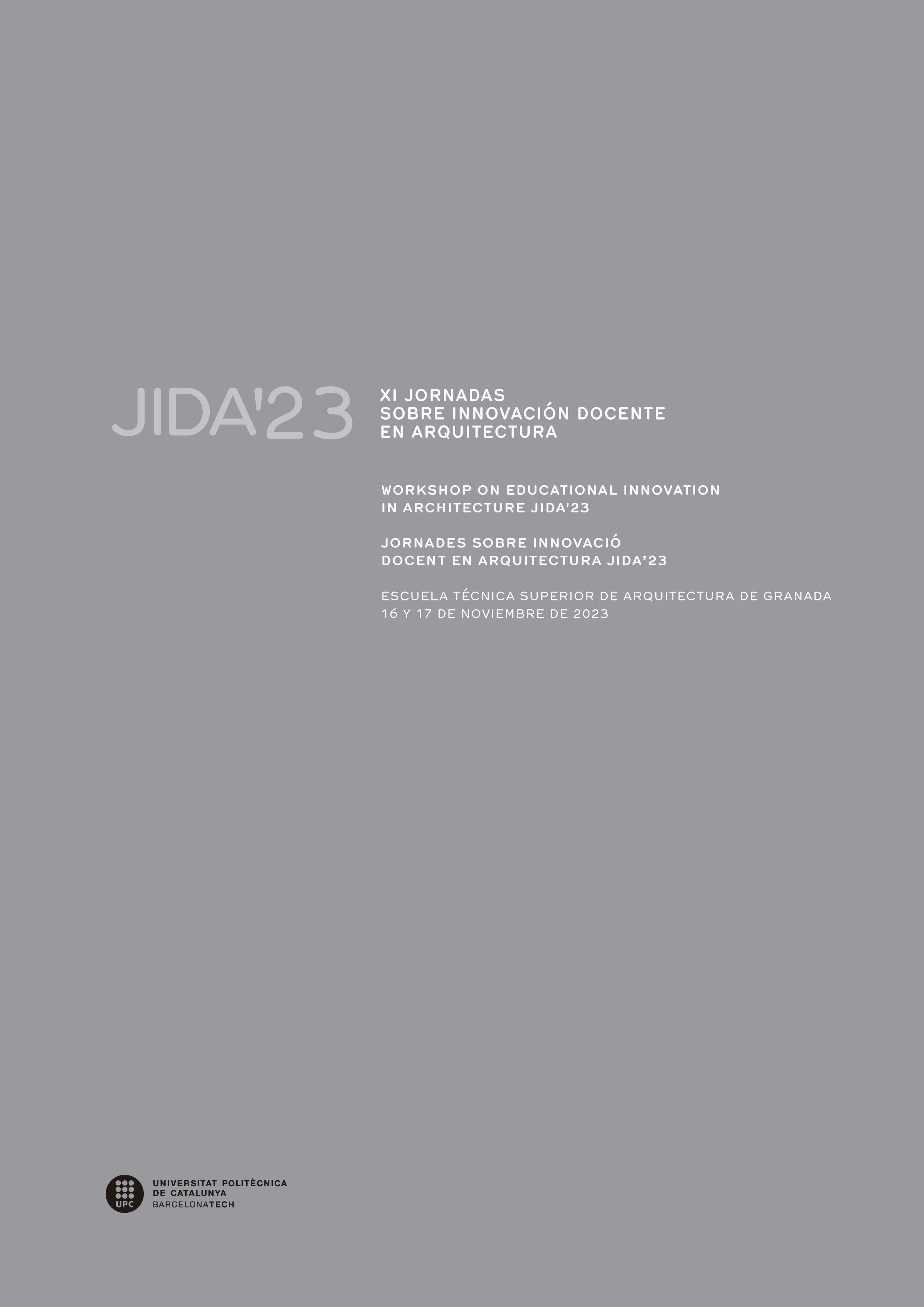Implementation of Design Thinking methodologies in the Architectural Design Lab
DOI:
https://doi.org/10.5821/jida.2023.12294Keywords:
architecture workshop, architectural design lab, second course, design thinking, site-program-conceptAbstract
Despite the shared roots between design and architecture, design methodologies, such as Design Thinking (DT), have evolved separately from the architectural workshop teaching. This article collects the experiences of implementing methodologies and exercises in the second-grade architecture workshop from 2018 to 2023. The implementation process was based on the incorporation of these methods within the basic teaching triangle composed of the competencies/objectives, methodology, and evaluation. The exercises tested include the DT double triangle paired up with the SITE-PROGRAM-CONCEPT sequence and specific DT exercises such as 6-3-5, the "Wallet exercise", empathy/Personas exercises, and the SCAMPER method. The implementation has been highly positive and has improved the structuring of course activities and the acquisition of creative skills by students. These results encourage us to continue integrating these practices in the future, contributing to design training in architecture.
References
Archer, B., Baynes, K., Roberts, P., Design and Technology Association, Loughborough University, Department of Design and Technology, & Design Education Research Group. 2005. A framework for design and design education: A reader containing key papers from the 1970s and 80s. DATA.
Biskjaer, M. M., & Christensen, B. T. 2021. A Second Look at Primary Generators. She Ji: The Journal of Design, Economics, and Innovation, 7(1), 7-23. https://doi.org/10.1016/j.sheji.2020.08.007
Buchanan, R. 1992. Wicked Problems in Design Thinking. Design Issues, 8(2), 5-21. https://doi.org/10.2307/1511637
Cutler, T. 2009. Designing solutions to wicked problems: A manifesto for transdisciplinary research and design. Design Research Institute, RMIT University.
Cross, N. 1993. Science and design methodology: A review. Research in Engineering Design, 5(2), 63-69. https://doi.org/10.1007/BF02032575
Cross, N. 2018. Developing design as a discipline. Journal of Engineering Design, 29(12), 691-708. https://doi.org/10.1080/09544828.2018.1537481
Cross, N. 1993. A History of Design Methodology. In M. J. Vries, N. Cross, & D. P. Grant (Eds.), Design Methodology and Relationships with Science (pp. 15-27). Springer Netherlands. https://doi.org/10.1007/978-94-015-8220-9_2
Darke, J. 1979. The primary generator and the design process. Design Studies. Volume 1, Issue 1, pp. 36-44.
Dorst, C. H. 2003. The problem of design problems. In E. Edmonds, & N. G. Cross (Eds.), Expertise in Design, Design Thinking Research Symposium 6 Creativity and Cognition Studios Press.
Johansson-Sköldberg, U., Woodilla, J., & Çetinkaya, M. 2013. Design Thinking: Past, Present and Possible Futures. Creativity and Innovation Management, 22(2), 121-146. https://doi.org/10.1111/caim.12023
Lawson, B. 2008. How designers think: The design process demystified (4th ed). Elsevier/Architectural. http://bvbr.bib-bvb.de:8991/F?func=service&doc_library=BVB01&doc_number=017731304&line_number=0001&func_code=DB_RECORDS&service_type=MEDIA
Muñoz- Alonso, G. 1996. Bergson 1959-1941, Ediciones del orto.
Rittel, H. W. J., & Webber, M. M. (1973). Dilemmas in a general theory of planning. Policy Sciences, 4(2), 155-169. https://doi.org/10.1007/BF01405730
Rowe, P. G. 1991. Design thinking. MIT press.
Schön, D. A. 1991. The reflective practitioner. Ashgate Publishing.
Serra, R. 1968. “Verb List Compilation: Actions to Relate to Oneself”
Simon, H. A. 2008. The sciences of the artificial (3. ed., [Nachdr.]). MIT Press.
Soriano-Peláez, F, Colmenares-Velate, S, Gil-Lopesino, E, Castillo-Vinuesa, E, De Barba, M. 2020. PROTOTYPING AS A LEARNING TOOL IN ARCHITECTURAL DESIGN, EDULEARN20 Proceedings, pp. 5308-5318.






















